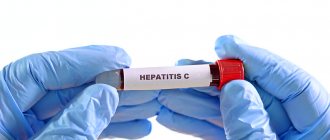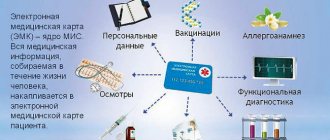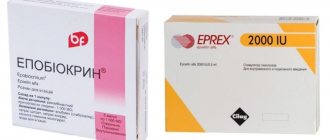false positive test for HIV, pixabay.com World statistics include more than 38 million people with HIV infection. No matter how scary these numbers sound, every year the disease is treatable. Means of protection, prevention, and special medications ensure a happy and long life for the HIV-infected population. The disease is most prevalent in countries with an average and low standard of living. The HIV rating includes the states of Central Asia, Eastern Europe, Africa, and the Middle East.
Some people, upon learning that they are infected with HIV, commit suicide. There are cases when a person still does not know for sure whether he is sick or not, but is already condemning himself to death.
But everyone should know: there is only one life and you can and should fight everything.
Often, even the best devices, clinics and specialists can make errors. Therefore, there is a possibility of an HIV test error.
If you are planning to take tests together with your sexual partner, then you need to know the information specified in the article. Today we will answer the following questions:
- What affects HIV tests? How to prepare for the test?
- Statistics of false positive tests for HIV.
- False HIV test causes.
- HIV positive, what does this mean?
- False HIV test, who is to blame?
Support the publication
- Join the CLAN
Or
Doctors believe that the key groups of HIV patients include:
“Gays, trans people, drug addicts, prison inmates. People working in the sex industry. As a rule, they do not maintain hygiene at all. And what kind of hygiene can we talk about if the brain solves only the need for attraction? The HIV epidemic affects women and adolescents in African countries. Because the level of powers does not allow for proper treatment. The number of people dying from HIV is growing.
Do not forget that this terrible disease primarily affects a strong decline in immunity. Unfortunately, there are no medications that will quickly get rid of the problem. But modern ARV drugs are able to control the level of infection in the body. Hold him back and not let him progress. Also, protect the surrounding society from infection. Be vigilant and attentive when choosing a sexual partner. It’s better to go through a joint study to be sure of each other’s health.”
HIV test result options
HIV tests can be positive or negative. In addition, positive results are quantitative.
Quantitative ELISA has limited use because it is not very informative. The concentration of antibodies in the blood does not have a direct correlation with the severity of the disease. Therefore, the results of the study cannot be used to determine indications for treatment or evaluate its results. But quantitative ELISA can be used to examine newborns. The antibody titer is determined over time. In the absence of infection it decreases, and in the presence of infection it increases. In addition, the concentration of immunoglobulins is lower than that of the mother, which indicates that the child does not have HIV, but if the titer is higher than the maternal titer, the newborn is highly likely to develop an infection.
Quantitative PCR has much greater clinical significance. The quantitative indicator is used for:
- differential diagnosis of HIV and false-positive results (false-positive results show a low viral load - less than 2000 copies/ml);
- determining the indications for prescribing antiretroviral therapy (a viral load of 100 thousand copies of RNA in 1 ml of blood is considered to be an argument in favor of starting treatment);
- assessing the effectiveness of antiretroviral therapy (if the load decreases, it is effective; if the load increases, it is worth changing the treatment regimen).
The child's test came back
There is a positive HIV test in a child. There are various possible infection options here. This may be a congenital pathological process. If the study was performed on a newborn. Especially if the mother’s status is positive. Infection may occur during various medical and non-medical procedures. Especially associated with blood transfusions and interventions with non-sterile instruments. And if this is a teenager, then it is possible to become infected through sexual contact. In all cases, it is necessary to contact infectious disease specialists and conduct additional examinations and prescribe special medications.
What to do if the test result is positive?
It all depends on who received the positive result, in what circumstances, and for what purpose the study was conducted. Let's consider various options for this situation.
Primary diagnosis
A person applied for a preventive examination or was referred for testing due to the appearance of HIV symptoms. He received a positive result. What does this mean, and what should be done in such a situation?
Let's start with the fact that tests are different. In most cases, ELISA is used for primary diagnosis, less often - PCR. If you receive a positive ELISA result, a confirmatory test is required - immunoblot. But you shouldn’t place too much hope on him. Only in 1 out of 200 cases the diagnosis is ultimately not confirmed.
If you receive a positive ELISA result, you can get three immunoblot results:
1. Concordance of the results of the two studies. The most common option. In this case, the diagnosis of HIV is confirmed. Treatment may be prescribed.
2. ELISA is positive, but immunoblot is doubtful. Most often, a questionable reaction indicates that the person was recently infected. If this is the case, then repeating the test after 1-3 months will show a positive result. In this case, the diagnosis will be established. Less commonly, the cause of a questionable immunoblot reaction is cross-immunoreactivity. A person is suffering from another infection, but antibodies are produced that are able to interact with antigens of the immunodeficiency virus.
If a questionable immunoblot result is obtained, a re-examination is carried out after 1 month. If the result is again doubtful, the next analysis is done after 6 months. If it turns out to be doubtful for the third time, they conclude that the person does not have HIV infection. If an answer is needed earlier, PCR is done.
3. ELISA is positive, immunoblot is negative. The analysis is repeated after 1-3 months. After 1 year of observation, HIV is excluded. If the patient is at high risk of HIV, a PCR test can be performed to ensure that there is no infection.
PCR as a method of primary diagnosis has been approved in Russia since 2007. However, it is rarely used in adults. The only advantage of PCR over serological tests is the possibility of obtaining an early result and higher sensitivity in the first 6 months after infection.
The indication for PCR is usually the assumption that a person may have an acute period of HIV infection. It occurs for various reasons, for example:
- recent sexual contact with an HIV-infected person;
- the appearance of symptoms characteristic of the acute period;
- professional contact (injection of a health worker with a contaminated needle).
In all these cases, PCR is performed. This study gives positive results within 10 days after infection. The sensitivity of the method is close to 100%. This means that if HIV infection is present in the blood, the test result will definitely be positive. But the problem with PCR is that positive results can also be found in the absence of the disease. They are called false positives. The frequency of such results is 2-5%.
If PCR was used as the first diagnostic method and you received a positive result, you need to consider the quantitative results. During the acute period, the viral load is usually high - from 100 thousand to 1 million or more copies/ml. But in the case of a false positive result, it is always low – up to 2000 copies/ml. Thus, if the load is higher than the specified value, there is a high probability that the PCR showed the correct results and you are indeed infected. But if the number of viruses is small, a false positive result cannot be ruled out.
Diagnosis can be made based on PCR alone if the viral load is high. But in any case, the test is required twice. A repeat analysis is carried out immediately after the first one. It is needed to exclude cases of false positive results due to contamination of the sample.
How long does it take to prepare results and their validity period?
Many users are concerned about how long the test lasts and when the HIV test needs to be repeated. A person could donate blood a week after contact with an infected person, receiving a negative result, but at this time one cannot be sure of one hundred percent accuracy.
But if we talk about the expiration date of an HIV test certificate, then it is considered valid for up to six months. Such deadlines cannot be set for pregnant women and those who had a real risk of becoming infected. In these cases, other research schemes apply. Anyone who wants to be sure that they have not become infected with a deadly virus should be examined every six months.
It’s rare that anyone will calmly wait for results. Even if there were no contamination situations, almost everyone is concerned about how long it will take to complete the test. You will have to wait for a response to donated blood for HIV in different ways, depending on the method . Express methods provide an answer in just a few minutes. You can do them yourself by purchasing a test at a pharmacy and do not wait too long for the result. But it must be remembered that this is not enough to make a diagnosis. A positive result does not always confirm the presence of HIV infection in the body, just as a negative result does not always confirm its absence.
PCR is done in about an hour, but the answer can be obtained in two to ten days. The fact is that the analysis is not done one at a time, but a batch is collected, and only after that the reaction is carried out. This is due to the large influx of people wanting to be examined, with a small number of laboratories that carry out such research. The same applies to ELISA, the result of which is given in three to nine days. Immunoblotting is carried out in various laboratories within a period of three days to several weeks.
Examination of pregnant women
In Russia, all pregnant women are tested for HIV. This is done in the third trimester, or upon admission to the maternity hospital, if the diagnosis was not carried out on time. HIV-positive women are also examined before childbirth. It is important that their viral load is low. This will mean that the risk of transmitting the disease to the child is minimal.
Previously, the main method of preventing HIV transmission to newborns was caesarean section. Today, 60% of HIV-positive women give birth vaginally. There are other prevention methods that can help prevent infection.
In the natural course of HIV, the risk of infection by the mother of the child is 40%. In the 90s of the last century, infection of children by mothers occurred in 15% of cases. Today, this infection is transmitted vertically in less than 1% of cases.
During pregnancy, two groups of patients can be tested for HIV:
- HIV positive;
- Presumably HIV-negative (but they may have newly diagnosed HIV infection).
People who are HIV positive may or may not receive antiretroviral therapy. This is due to the presence or absence of indications for it.
Some HIV-positive women have a low viral load and do not suffer from immunodeficiency. In this case, they do not receive drugs. But medications are prescribed no later than 12 weeks before birth to prevent transmission of the disease and allow the baby to be born naturally.
Other women have a high initial viral load. They receive antiretroviral therapy continuously. Some drugs have a negative effect on the fetus in the 1st trimester, so they are used only from the 2nd trimester. With adequate therapy, most women test negative for HIV before giving birth and can give birth without a cesarean section.
Now let's look at the options in which a woman first receives positive tests for HIV during pregnancy. They may be as follows, depending on the timing of gestation:
- obtaining a positive result in the 1st-2nd trimester;
- positive results in the 3rd trimester.
The best prognosis is characterized by a situation in which HIV is detected in the 1st or 2nd trimester. Especially if it is an old and not a recent infection, because in this case there is no large viral load, and the risk of transmitting the disease to the child is sharply reduced.
How children become infected vertically:
- 75% during childbirth;
- 15% when breastfeeding;
- 10% in utero.
Of those infected in utero, only 1 in 10 babies become infected before the 3rd trimester. Thus, obtaining a positive HIV test result earlier is a favorable prognostic sign. Because the overall risk of a baby becoming infected before the 3rd trimester is only 1%. Although in the final stages of pregnancy, and especially during childbirth, it is much higher, doctors will have time to take the necessary measures to prevent infection.
Typically, if a person tests positive for HIV, they are not given treatment immediately. It is started only when the level of CD4 cells in the blood decreases and for some other indications (for example, the patient’s reluctance to infect his HIV-negative partner). But pregnant women are always prescribed treatment.
If the test result is positive for HIV, all pregnant women undergo PCR to determine the amount of viral RNA in the blood. A viral load of more than 100 thousand copies/ml is considered high. In this case, the risk of transmission of infection in utero is much higher. Treatment begins no later than 24 weeks, and preferably earlier. There are also situations where the viral load is initially low. Then the pregnant woman is prescribed antiretroviral therapy 12 weeks before the expected date of birth.
The goal of antiretroviral therapy during gestation is to reduce the viral load to undetectable (below 20-50 copies/ml). If she becomes like this before the onset of labor, then natural childbirth is possible. If the load is higher, a caesarean section is performed, since this method of delivery reduces the risk of infection of the child.
Newborn examination
A child born from an HIV-infected mother must be tested for HIV. In most cases, if all necessary preventive measures have been taken, this test will be negative. But still in 1% of cases it is positive.
To examine children, the traditional method for adults - ELISA - is not used. There is no point in using immunoblot either. These techniques are aimed at detecting antibodies to HIV in the blood - that is, immune system factors produced in response to the virus entering the body. But the problem is that these antibodies are present in the blood of all newborns born from HIV-positive mothers. Because maternal blood circulates in their blood. Therefore, any test performed during this period will be positive, regardless of whether the child has become infected with HIV or not.
For this reason, the main method of primary diagnosis of the disease in children is PCR. This technique is not very informative in the first days of life. This is associated with a high risk of false negative results. Of 100 children who became infected with HIV and were tested for it in the first 2 days of life, only 38 children will show a positive PCR result.
Therefore, diagnostics are first carried out no earlier than 2-4 weeks. At this time, the risk of a false negative result is only 11%. By the 3rd month of life, the study becomes 100% sensitive.
Options for obtaining PCR results in a child:
- positive test - with a high probability it is true, most likely, the baby really has HIV;
- a negative test may turn out to be false, and the younger the child, the higher the likelihood of receiving it.
Thus, if the PCR result is negative, although antiretroviral therapy is not prescribed, the child is subject to further observation. To exclude HIV, an ELISA is required 1 year and 1.5 years after birth. If by this time antibodies have not appeared, this means that infection has not occurred, and the child is removed from the register.
If a positive PCR result is obtained, the test is repeated. With a high probability, another positive result will be obtained, and then the diagnosis is considered confirmed. The child is prescribed antiretroviral therapy, since in the first 12 months of life the risk of death from HIV is greatest.
Reduced effectiveness of antiretroviral therapy
People with HIV receive antiretroviral therapy, which allows them to potentially have the same life expectancy as the average population. During the entire treatment period, the person gives tests from time to time. The goal of therapy is to reduce the viral load to undetectable—that is, to obtain negative PCR results. Against the backdrop of successful antiretroviral therapy, a person gets tested once every 3 months. They are usually negative, meaning the viral load is less than 20-50 copies/ml. But at some point the result of the study may be positive. This is exactly the situation we are currently considering.
A repeated increase in RNA concentration is one of the options for virological treatment failure. In this case, the doctor must make sure that the patient is taking the medications correctly. Measurements of drug concentrations in the blood may be taken. If the drugs are actually taken by the patient, enter the bloodstream, but they do not work, this is an indication for an immediate change in the antiretroviral therapy regimen.
Why you should change treatment as quickly as possible:
- the lower the initial viral load, the better the response to the new treatment regimen;
- secondary diseases associated with a decrease in the number of CD4 cells do not have time to develop;
- expressed resistance to an antiretroviral drug does not have time to develop, so the risk of immunity to a new drug (cross-resistance) is reduced.
However, treatment is changed only when the viral load increases significantly. The amplitude of changes up to 400 copies/ml is considered clinically insignificant. Only if after 4 months a repeated study shows an increase in viremia, correction of the treatment regimen is required. The patient is observed for some time. How long observation lasts depends on the antiretroviral therapy regimen used - resistance develops faster to some drugs, slower to others. The main goal of changing the treatment regimen is to prevent resistance, including cross-resistance. The risk of its occurrence increases already with a viral load of 100-300 copies/ml. However, it is maximum at a viremia level of 1000 copies/ml and above.
Source: ticf.org
The diagnosis of HIV infection cannot be established based on one test result, since in this case there is a possibility of error.
A false positive is a positive HIV test result in a person who is not infected with the immunodeficiency virus. Obtaining such an analysis result can lead to serious consequences for the patient and erroneous recommendations from the doctor. That is why the process of diagnosing HIV infection and making the diagnosis itself are subject to a very strict algorithm that does not allow errors.
Blood can be tested for HIV only using tests certified for use in a specific country. Two important characteristics of all tests are specificity and sensitivity. Test sensitivity reflects the proportion of positive results that the test detects in patients infected with HIV. Specificity, on the other hand, reflects the proportion of negative test results in healthy people. In general, tests for HIV infection are highly specific, meaning that very few false positives can occur and the vast majority of uninfected patients still test negative. For example, if you test 1000 uninfected people and get 4 positive results, this indicates a test specificity of 99.6% (996 true negative results per 1000 people tested).
The cause of a false positive result may be technical problems associated with the test itself or with the biological material. Technical problems include sample mix-ups, mislabeling, improper handling, and interpretation of the visually read result of rapid tests.
Biological reasons include participation in an HIV vaccine trial and medical conditions such as: • Epstein-Barr virus (EBV) infection; • pregnancy; • obtaining immunoglobulin; • hyperbilirubinemia; • autoimmune diseases; • recent vaccination. The mechanism for generating a reactive test result in these conditions, as a rule, is based on incorrect recognition by tests of antibodies that are not associated with HIV and appeared in our body in response to the introduction of other antigens, but are recognized as antibodies to the immunodeficiency virus.
Good practice recommended by WHO is to retest all people with an initially positive result to eliminate any potential errors in testing or reporting.
When a screening test results in a positive HIV result (called a reactive result), additional testing is needed to determine whether the positive result is true or false.
If a positive result is obtained from a rapid test, then compliance with the WHO-recommended research algorithm is required - the sequential use of several test systems from different manufacturers. If, when performing different rapid tests sequentially, the initial result is positive, but the subsequent result is not, a pre-laboratory examination is necessary to exclude an early infection. The predictive value of conducting an additional 2-3 tests in a row tends to 100%.
If a reactive result is obtained during testing in the laboratory, laboratory staff will independently examine the blood serum according to the algorithm described in the previous article. Upon receipt of laboratory confirmation of HIV infection, the patient must contact the regional AIDS center for observation by an infectious disease specialist and initiation of ART. If you receive a negative result, you can say that the previous test was false positive and you should figure out what caused this result. Further examination may be necessary to identify one of the above medical conditions (autoimmune diseases, etc.). If the second laboratory test result is negative, but the person has doubts about its reliability (for example, in people at high risk of HIV transmission), then retesting is necessary after 6 weeks from the initial one to exclude the “window period” - this is the period when infection the virus occurred, but antibodies to it have not yet formed. During such a period, it is possible to obtain another unreliable result - a false negative.
Once the diagnosis of HIV infection has been established and treatment has begun, antibody testing should not be repeated.
When conducting screening studies, it should be taken into account that the prevalence of HIV infection in certain regions can also affect the number of false-positive results.
HIV prevalence reflects the proportion of people living with HIV infection (PLHIV) in a particular area and affects the number of false positive results depending on the true positive results.
At high prevalence (2%), if 10,000 people were tested, 200 samples would come from PLHIV (true positives) and 9,800 from uninfected people. Given the test's 99.8% specificity, about 20 samples will be false positives. In this case, out of 220 positive results, 91% of people are actually infected with HIV. The number of truly positive results significantly exceeds the number of false ones. At low prevalence (0.1%), only 10 samples out of 10,000 will be true positive, while 9,990 samples will be from uninfected individuals. Considering the specificity of the test (99.8%) - 20 samples will be false positive. In this case, out of 30 positive results, only 33% of people will be infected and the number of false positive results will exceed the number of true ones. When conducting screening programs in populations with low HIV prevalence, it should be expected that the number of false positive results will outweigh the true positive results.
Do not forget about methods of preventing HIV infection after receiving a negative result. These include: - using a condom during sexual intercourse (avoid using oil-based lubricants); — regular HIV testing; — when using injecting drugs, use sterile syringes/needles and avoid sharing them with other users; - taking pre-exposure prophylaxis (PrEP) in high-risk groups and post-exposure prophylaxis (PEP) after an emergency (it is necessary to start taking PEP as early as possible, and no later than 72 hours after exposure); - male circumcision (WHO indicates a reduction in the risk of acquiring HIV through heterosexual contact by up to 60%); — examination of pregnant women and initiation of ART if a positive result is obtained.
Author: doctor of the University Clinic H-Clinic Konovalova Anastasia Aleksandrovna
Medical editor: Head of the University Clinic, Ph.D., infectious disease specialist Danila Sergeevich Konnov
Return to list
Source: h-clinic.ru
Children with HIV
Best materials of the month
- Why you can't go on a diet on your own
- 21 tips on how to avoid buying stale food
- How to keep vegetables and fruits fresh: simple tricks
- How to curb your sweet cravings: 7 unexpected products
- Scientists say youth can be extended
Babies can become infected during pregnancy and childbirth. Infection is also possible through breastfeeding or blood transfusion. The probability of transmission of the virus from an HIV-infected mother to a newborn is 30%. Of these, 11% are infected in utero, 15% during natural childbirth, and 10% during breastfeeding.
HIV-positive babies are usually born prematurely. The infection most often appears in the first year of life. Symptoms include: delay in physical development, prolonged diarrhea, swollen lymph nodes, vomiting and nausea. Manifestations include skin rashes: pustules, vesicles, spots, atopic or seborrheic dermatitis, vasculitis, eczema.
If left untreated, HIV infection in children quickly progresses to AIDS. Life expectancy is 1-3 years. In the final stages, exhaustion syndrome, pneumonia, heart failure, and central nervous system damage are observed. Therapy for children is prescribed from the first 4-6 months of life. The treatment regimen, as for adults, changes periodically to avoid the development of viral resistance. Manifestations of HIV in adolescents are the same as in adults, with the exception of rarer cases of cancer.
Two types of verification
There are two main types of tests for HIV/AIDS: enzyme immunoassay and PCR diagnostics. Both are informative and accurate.
Enzyme immunoassay is the most common today. It is based on the detection of antibodies to HIV in the patient’s blood serum. In most patients, they appear approximately 4-6 weeks after infection, in 10% - after 3-6 months, and in 5% - later. Therefore, ideally this test should be taken three times every 3 months.
PCR diagnostics are a polymerase chain reaction test that can test serum, antiviral RNA or DNA, and quantify CD-4 lymphocytes. At the same time, doctors often call PCR analysis the only possible early diagnosis of HIV infection, which is also carried out in children of the first year of life. The advantage of this research method is the fact that it can detect the virus in the incubation and early clinical periods, when there are no antibodies in the blood yet. This helps to start treatment earlier and reduce the negative impact of the disease.
When you need it
A certificate is required in many cases of interaction between a foreign citizen and official Russian authorities:
- when a residence permit is issued;
- when a temporary residence permit is issued;
- to obtain a work permit or labor patent;
- when obtaining citizenship under special programs (resettlement of compatriots, NRN, etc.);
- when receiving a visa for a period of more than three months.
Even if a person plans not to work, but simply to stay on the territory of the Russian Federation, a certificate of absence of HIV infection for the Federal Migration Service (or rather, for the Central Internal Affairs Directorate, since the FMS was abolished several years ago) will have to be obtained.
How to prepare?
You need to prepare for an HIV/AIDS test. Blood should be donated on an empty stomach, and the last meal should take place no later than 8 hours before. Naturally, it is recommended to maintain a unique diet, a few days before donating blood, giving up alcohol and “harmful” foods - fatty, fried, smoked foods, marinades and other refined foods.
It is worth considering that if you are unwell, even with any viral or infectious disease, it is better not to donate blood or come back for testing again 35-40 days after recovery. Otherwise, there is a risk of getting a false positive result.
The HIV/AIDS test goes through several stages of testing. Therefore, it takes 2-10 days to prepare.
Requirements for filling out an HIV negative certificate
The HIV negative certificate is completed in accordance with strict rules developed by the state:
- the header of the form indicates the full name of the medical institution with license data;
- A field indicating the series and certificate number is required;
- Full name of the medical worker conducting the medical examination;
- Full name of the foreigner in Russian (the passport must be translated in advance and certified by a notary);
- details of the identity document, date of birth and country of residence;
- a series of test systems for determining immunodeficiency and the date of the study;
- the form must contain 3 signatures: the doctor who referred for the examination; chief physician of a medical organization; the patient himself.
The form is protected by watermarks and has a standard form, so it is impossible to replace the document with a homemade certificate or an unauthorized form. It is not allowed to provide analysis results from the country of arrival or from a medical center not accredited by the state. You will have to retake the blood for analysis and provide a certificate approved by law.
Negative plus
The result can be positive, negative or doubtful. In the latter case, it is worth retaking the analysis a little later.
Doctors say that if the result is positive, it is impossible to immediately declare that a person has HIV or AIDS. Indeed, in some cases, indicators may be overestimated for other reasons. In this situation, you should retake the test again - everyone who has a “+” result goes through this procedure.
Where does the “false signal” come from? Due to certain diseases and conditions that may cause cross-reactions. For example, due to allergies, antigens that are incomprehensible to the body can be produced in the blood, which it recognizes as foreign.
Also, a similar reaction can occur due to a sharp change in blood composition - for example, due to a jump in cholesterol (with excessive consumption of fatty foods, fried foods, seeds), hormonal imbalance (in particular, during menstruation in women), infections (respiratory diseases, the presence of hepatitis and influenza viruses, recent vaccinations, tuberculosis), excessive blood thickness, arthritis, oncology. Fungi, viruses and bacteria can also contribute to the appearance of incorrect data. In addition, a false positive result can occur due to medical errors: violation of the rules for collecting and transporting blood, use of low-quality serum, and improper storage of the material.
Manifestations of CNS damage
Damage to the nervous system, mainly the brain, is one of the main problems of HIV. CNS disorders are observed in 50-80% of patients, in 10% of them the symptoms are pronounced. There are several ways in which the peripheral and central nervous system can be affected by HIV infection. The first is the penetration of infected lymphocytes into the central nervous system, the second is the effect of secondary infections. Also in some cases, the development of brain tumors is possible.
The first signs of damage to the nervous system:
- headache;
- sleep disturbance (insomnia or drowsiness);
- tremor of the limbs;
- difficulty concentrating;
- memory impairment;
- behavioral changes.
As the disease progresses, signs of central nervous system damage become more obvious. A person experiences a change in behavior, fever, and convulsions. When the brain is damaged, vision deterioration and even blindness are also observed. At the final stages of disease progression, the patient may experience paralysis or paresis. Mental disorders extend to personality changes and dementia.
Some associated CNS diseases are treatable. However, the presence of such diseases complicates therapy in general and accelerates the onset of the terminal stage.
Degrees of anonymity
If you wish, you can get tested for the immunodeficiency virus at any time. However, there are a number of situations when it is recommended to do this. Thus, it is worth donating blood when planning a pregnancy, before a planned operation, after questionable injections, unprotected sexual contact with a stranger, or in case of a sharp deterioration in health.
You can get checked at any clinic, private clinics and diagnostic centers, as well as specialized AIDS centers. Moreover, in public medical institutions this procedure will be completely free. Any citizen of the country can take tests at the AIDS center, regardless of where he lives.
There are two types of testing: confidential and anonymous. In the first case, the person tells the laboratory assistants his name. In the second case, he is assigned an identification number. All results are given exclusively to the patient, and even if the result is positive, the laboratory cannot report it anywhere - this will be regarded as a violation of medical confidentiality. In paid clinics, the principle of taking tests is no different, only in this case the service is provided for money. The cost is from 400 to 3,400 rubles, depending on the complexity and verification options.
Source: aif.ru
Analysis transcript
After people have been tested, the question often arises of how to decipher the test result and what to do if a positive result for HIV is obtained.
1. If the ELISA showed the presence of all or almost all antibodies to the antigens according to this test system, this means a positive test for HIV. If the answer after the second serological enzyme immunoassay is positive, then immunoblotting must be performed. Deciphering its results will be more accurate. If the enzyme immunoassay gave a positive result, the next immunoblot analysis also showed the presence of HIV, then the final result is given. When the tests are deciphered, you need to know that a positive HIV test is determined by:
- 60% to 65% 28 days after infection;
- in 80% - after 42 days;
- in 90% - after 56 days;
- in 95% - after 84 days.
If the response to HIV is positive, this will mean that antibodies to the virus have been detected. To avoid a false positive answer, you need to take the tests again, preferably twice. If antibodies to immunodeficiency are detected when passing two tests out of two, or when passing 3 tests in 2 of them, then the result is considered positive.
The p 24 antigen can be detected in the blood within 14 days from the date of infection. Using the enzyme immunoassay method, this antigen is detected from 14 to 56 days. After 60 days it is no longer in the blood. Only when AIDS forms in the body does this p24 protein grow again in the blood. Therefore, enzyme immunoassay test systems are used to detect HIV in the first days of infection or to determine how the disease progresses and monitor the treatment process. The high analytical sensitivity of the enzyme immunoassay detects p24 antigen in biological material for HIV of the first subtype in a concentration of 5 to 10 pkg/ml, for HIV of the second subtype from 0.5 ng/ml or less.
2. A questionable result of an enzyme immunoassay means that there was a mistake somewhere in the diagnosis, as a rule, something was mixed up by medical workers, or the person has signs of infection, but the result is negative, which raises suspicion, and the person is sent for a repeat test.
False positive result in pregnant women
Errors in laboratory tests especially cause a lot of anxiety for women who are in a period of joyful and exciting anticipation of the birth of their baby.
A false positive HIV result in women during pregnancy occurs in two cases:
- When a new life is born in a woman’s body, the genetic materials of male and female organisms are mixed, resulting in new DNA.
The female body instantly reacts to the “foreign woman” by producing its own antibodies, and during testing they will be perceived as antibodies to HIV. The result is a false positive. The only way to obtain reliable data is to conduct an enzyme-linked immunosorbent test aimed specifically at detecting antibodies.
The cause of the error may be the stressful state of a pregnant woman, especially if psychological problems occurred before the moment of conception.
The doctor must inform the expectant mother of the test result, but this must be done as carefully as possible, taking into account the heightened state of the female psyche (pregnancy makes a woman especially sensitive to various news). To confirm or refute the received data, a woman expecting a child must undergo examination in specialized clinics: an AIDS center, or a dermatovenerological dispensary
Diagnosing HIV in the laboratory
If there is a reason for an HIV test, you must first take a general blood test. The laboratory will record in detail all the data, on the basis of which specialists will be able to judge the amount of antibodies in the bloodstream: their amount in case of a false positive result will be higher than the standard. However, this cannot be a reason for concern - as practice shows, high numbers may have completely different reasons.
Diagnosis consists of two stages:
- Screening ELISA (enzyme-linked immunosorbent assay), sorting antibodies into clearly healthy and suspicious ones, which manifest themselves ambiguously. It is at this stage that false positive results may appear.
- A more complete analysis is immunoblotting. The method consists of studying serum obtained by isolating plasma and red blood cells from a portion of provided blood and subsequently identifying antibodies for their cooperation with the virus. Experts recognize this method of testing for HIV detection as more effective, but it cannot be considered flawless either; the method does not provide any guarantees.
Blood sampling is carried out within 20 minutes using disposable medical instruments. The procedure can be completed anonymously or openly.
The waiting time for results is no more than 3 weeks.
For reference: HIV and AIDS are very often confused; in order to clearly understand what is being discussed, you need to understand the difference between these designations. AIDS is an irreversible disease that in the overwhelming majority leads its carriers to a tragic ending. HIV is a virus with which a person can coexist quite peacefully for a long time, while remaining a carrier.
Treatment of HIV with modern methods
HIV infection is not yet curable. The patient regularly undergoes PCR and counts the number of immune cells: CD4 T-lymphocytes, or T-helper cells, or T-suppressor cells, or CD8 T-lymphocytes. There should be more than 1400 T helper cells; if there are less than 500 cells, this is immunosuppression. Against this background, five out of a hundred patients may develop AIDS in the next two years. When the number of viruses exceeds a certain level or the number of T-lymphocytes decreases, treatment is prescribed. The effect of HIV treatment is assessed by PCR and T-lymphocyte levels. The best result is the absence of the virus in the blood, but this does not mean a cure. When the number of viruses decreased threefold and T-helpers increased, that’s also good. Gradually, the virus develops resistance to drugs, they are changed to others, but gradually the immunodeficiency worsens, the disease can last almost 30 years. For HIV infection, regular monitoring is necessary for timely treatment. The virus does not show any symptoms for a very long time, but treatment causes many adverse reactions, significantly worsening the quality of life. Refusal of HIV treatment shortens life, bringing AIDS closer. If you suspect a viral infection, it is vital to consult a doctor. Get help from an infectious disease specialist by calling. Anonymity is guaranteed.
Where to go if HIV is detected?
If HIV infection is detected, you must register with a specialized institution - the Center for the Prevention and Treatment of AIDS. When registering, anonymity is excluded; the entire package of documents is provided. The initial examination is extensive and serious, possible concomitant infections and simply hidden chronic diseases are looked for, all kinds of blood, urine and stool tests are done, consultations with specialists, ultrasound of the abdominal cavity and radiography of the lungs are carried out. The entire examination is part of the government guarantee program, free of charge, but very long and uncomfortable.
Dispensary observation is designed to monitor the course of the infectious process - regular examination and provide free treatment if necessary. Everything is exclusively on a voluntary basis, only with the consent of the patient, expressed in writing. The start of treatment is determined by the viral load, which is determined by the number of special blood cells - CD4 lymphocytes, in which the virus lives and multiplies. The lower the number of CD4 lymphocytes, the more virus in the human body.
The observation schedule is determined by the regulatory documents of the Ministry of Health; the attending physician of an HIV-infected person must familiarize the patient with the observation program and even invite him to an appointment, which is not always done. An HIV-infected ordinary person who also sometimes needs to forget about the “sickness”, it is difficult for him to combine work with visiting the Center, especially to manage to undergo examinations and tests without anyone finding out about the problem.
Legislative support for infected people
Getting a positive HIV result does not mean sudden death. This disease is not new; measures for diagnosing and treating the disease have long been developed. Society is tolerant of such persons; various seminars and other events are held where a person can talk about his problem, share his experience and help other people who are desperate and do not want to fight.
The state has a legislative framework that is aimed at social protection of people with this virus and their support. Regulations have also been developed on the employment of such persons, on the prevention of HIV infection, diagnosis and prevention.
Everyone should know what HIV is, the necessary therapy, how to protect against it, and that there is no need to avoid people infected with this disease. To prevent the disease from manifesting itself, you should take care of your health, not have sexual contact with unfamiliar men or women, and also follow a strict diet before taking an HIV test.
HIV-infected people are people too, you don’t need to be afraid of them or speak badly of them, it’s important to support them in difficult times and help you set yourself up for a positive outcome.
If the result is positive, the patient is prescribed several drugs that are part of highly active antiretroviral therapy. It is the viral therapy HAART that helps most people with HIV lead a normal life.
Diseases with similar symptoms
There are certain diseases similar to AIDS in their clinical manifestations.
In this case, it can be confused with another disease, HIV, since the symptoms are similar, but do not indicate the development of the disease. Symptoms similar to acquired immunodeficiency syndrome in the following diseases:
- Meningitis . It is characterized by the development of an inflammatory process of the soft membranes of the brain and spinal cord, the causative agent of which is a virus or infection. If timely treatment is not provided, certain consequences may occur in the form of loss of quality of hearing, speech, vision and other vital functions.
- The early stages of the development of HIV infection are manifested by symptoms that are similar to the flu or a cold - hyperthermia, enlarged regional lymph nodes, weakness, increased fatigue, dry cough.
- Whooping cough . It is of bacterial origin and manifests itself with similar symptoms to HIV at the initial stage of development.
- Tuberculosis . Manifested by low-grade hyperthermia, general weakness, headaches.
- Hepatitis A is manifested by malaise, hyperthermia, loss of appetite, nausea, heaviness and pain in the right side.
Medical error
Any medical institution has job descriptions containing a sequence of employee actions to prevent HIV infection of others.
The rooms where HIV tests are taken must have special disinfectant solutions and UV lamps. Failure to follow the rules and instructions for disinfecting the premises may be one of the reasons for obtaining inaccurate analysis results.
The risk of infection increases if:
- after taking the previous analysis, the apparatus was not sufficiently washed and processed;
- incorrect analysis parameters are set, etc.
If an error was made in obtaining a positive result, a repeat test is ordered and a new blood sample is taken. Such cases are possible when low-quality reagents, contaminated samples, etc. were used.
Medical error is possible if HIV in patients occurs together with other infections that have similar symptoms and produce similar antibodies. In this case, after some time, usually 2-3 months, a repeat blood test is taken.
About the indicators after the study using the polymerase chain reaction method
Using this method, HIV RNA and DNA are detected almost immediately after infection. But a final diagnosis is not made; mandatory confirmation by other methods is required. “Help me decipher the PCR result.” — you can hear such a request quite often. What is written in this case if an immunodeficiency virus is detected? When responding to the result of an analysis done using PCR, the number of RNA copies per milliliter of blood is indicated. The table below shows the result depending on the quantitative characteristics in the blood.
| Quantitative indicator (number of copies) | ||
| Less than 20 | From 20 to 10 6 | More than 10 6 |
| RNA concentration is insufficient to make a diagnosis (inaccurate) | Reliable | Viral load is high |
It is good to use the above table when testing for AIDS, since it can easily be used to determine the stage of the disease.
These tables, taking into account various test systems, are available in laboratory rooms for each method of enzyme immunoassay and immunoblotting.
They are often asked: “Decipher the answer after a polymerase chain reaction study using the CD4 indicator.” The normal number of CD4 cells is from 600 to 1900 cells per milliliter of biological material. This corresponds to HIV-negative status. But you need to know that these indicators, even in healthy people, are not in this range.
In the modern world, many laboratories already have good equipment with which you can completely examine the body for HIV infection.
- Order processing on the same day
- Hand delivery
- Only original forms
- Seals and signatures of active doctors
- Confidentiality
- Lowest prices
Today, one of the most untreatable diseases is HIV infection. People infected with it are susceptible to frequent illnesses and are constantly tired at work. An immunodeficiency virus, like hepatitis or syphilis, is dangerous during sexual contact or injections with unsanitized syringes, as it is instantly transmitted to another person and negatively affects his health.










